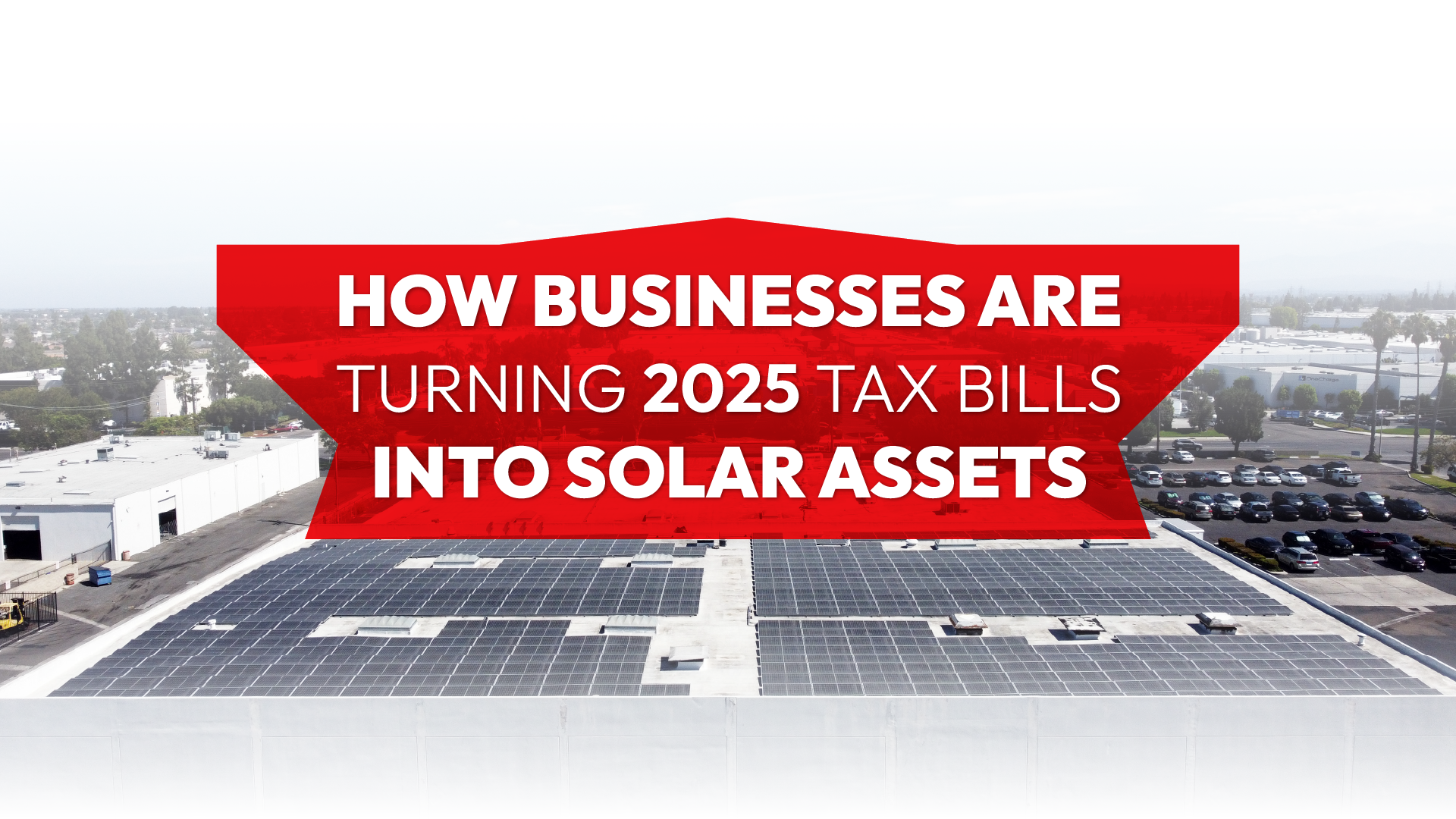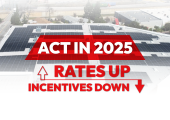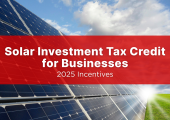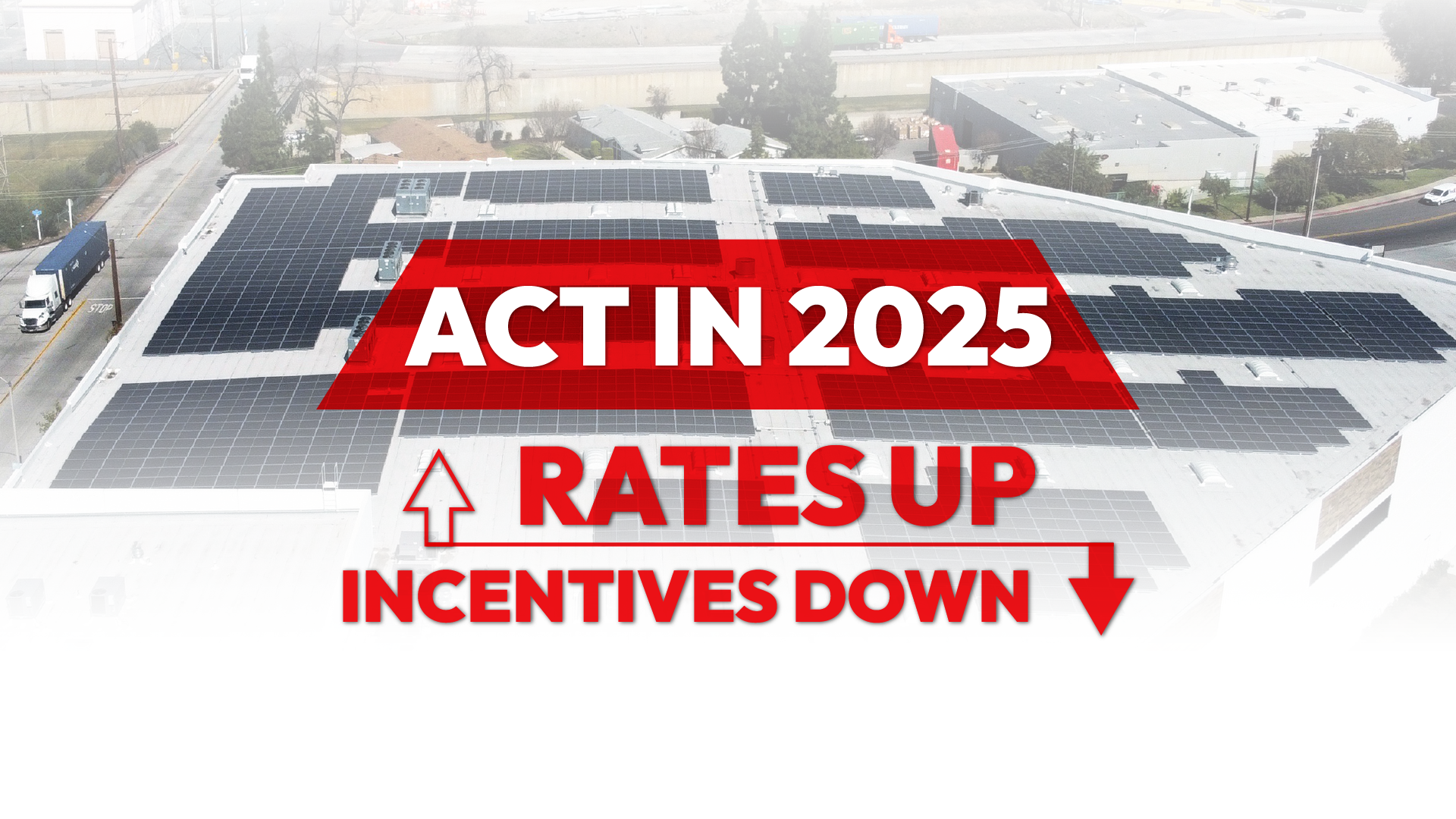A new way to look at commercial solar: not as a cost, but as a tax strategy.
Many business owners are familiar with rising electricity costs – but fewer realize how powerful solar becomes when viewed through the lens of tax planning.
In 2025, the combination of the Federal Investment Tax Credit (ITC) and 100% bonus depreciation offers one of the most lucrative financial tools available to owner-operators and corporations with taxable income.
And because those incentives are scheduled to phase down under the Big Beautiful Bill, this is also one of the last years to capture their full value.
A Real-World Example: Financing Solar for Tax Relief
Here’s a simplified example we often discuss with business owners:
- Project Cost: $851,000
- Tax Incentive Value: ≈ $560,000
- Annual Utility Savings: ≈ $50,000
- Annual Loan Payment: ≈ $100,000
If the system is financed, the $560,000 in tax benefits arrive in year one (based on a 21% corporate tax rate) – while the $100,000 annual debt service is largely offset by $50,000 in energy savings (~$4,200/month).
That means the business is effectively paying about $50,000 a year to unlock more than half a million dollars in tax value and add a long-term energy asset to their property.
How That $560k Example Breaks Down
|
Incentive Type |
Value |
Description |
|
Federal ITC (30–50%) |
≈ $425,500 |
Direct credit against federal tax liability, or transferable if unused |
|
Federal Bonus Depreciation (100%) |
≈ $134,000 |
Based on depreciable basis after ITC reduction |
|
State Depreciation (CA Example) |
≈ $20,000 |
Accelerated depreciation using state rates |
|
Total Estimated Tax Benefit |
≈ $580,000 |
Rounded to ≈ $560k for illustration |
These numbers show how a well-structured commercial solar project can deliver a year-one benefit equal to more than half the project cost, before factoring in decades of reduced utility expenses.
Why 2025 Is the Pivotal Year
Under current law, businesses must start construction by July 4, 2026, or place the system in service by December 31, 2027, to remain eligible for the full ITC and bonus depreciation.
After that, both incentives begin to phase out – and projects using imported materials from “foreign entities of concern” will be disqualified entirely.
That’s why many CFOs and owner-operators are safe-harboring solar projects in 2025: to lock in today’s incentives and eliminate uncertainty around future rule changes.
👉 Learn how to calculate your eligible project value using our Solar ITC Calculator.
Why Financing Makes It Even More Powerful
When combined with conventional or specialized solar financing, this structure becomes self-funding:
- Tax incentives deliver immediate cash or tax relief
- Electricity savings offset loan payments
- Asset ownership boosts NOI and property value
In other words, solar in 2025 isn’t just about sustainability – it’s a strategic financial decision that can transform a year-end tax burden into an income-producing asset.
Watch: How the Numbers Work
This short video walks through the example above – showing how a business effectively trades $50k per year in payments for over $560k in tax benefits and long-term energy independence.
Final Thought
If you’re expecting a significant tax bill this year, it may be worth exploring how commercial solar can turn that liability into long-term value.
Revel Energy specializes in designing and financing commercial solar systems that optimize tax outcomes while reducing operational expenses for California’s commercial, industrial, and agricultural facilities.
Start your free energy and tax benefit analysis, contact our team today.
ROOFTOP SOLAR
Commercial grade rooftop solar is ideal for: manufacturing, warehousing, logistics, industrial, retail, hospitality buildings and more with over 10,000 sq. ft. rooftops.
CARPORT SOLAR
Free standing carport solar generates added solar power for properties with limited rooftop space. Added benefits include shading and protection for employees vehicles.
ENERGY STORAGE
Crucial for reducing peak demand charges. Automated to supply electricity when your panels won’t. Energy storage is ideal for businesses that incur significant peak charges.
EV CHARGING STATIONS
As the popularity of EVs increase, so does the demand for on-site EV charging stations. This sustainable amenity has become a parking lot fixture for employers.
CREATING CAPITAL THROUGH SUSTAINABILITY, WE OFFER:
PROFESSIONAL GUIDANCE
CUSTOM TAILORED PLANNING
ENGINEERING, PROCUREMENT, CONSTRUCTION & INSTALLATION
CSLB #1106092
Client Testimonial: Kelemen Company
Corporate Business Park in Irvine, CA has created significant electricity cost savings through commercial solar installed across the 5-building business park.
Client Testimonial: Tice Gardner & Fujimoto LLP
See how this CPA firm saved on electricity and gained valuable tax credits through commercial solar that they used to keep cash in the businesses.








